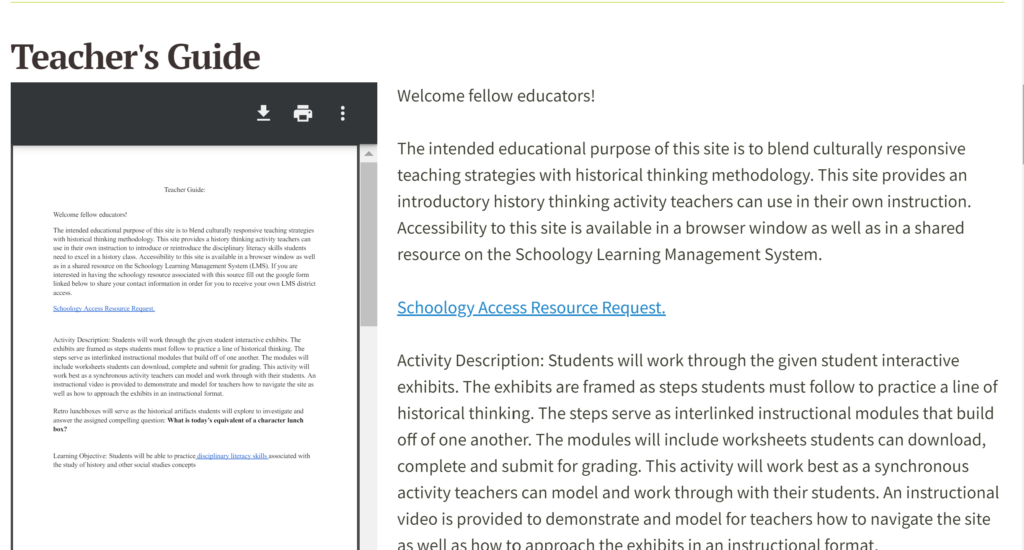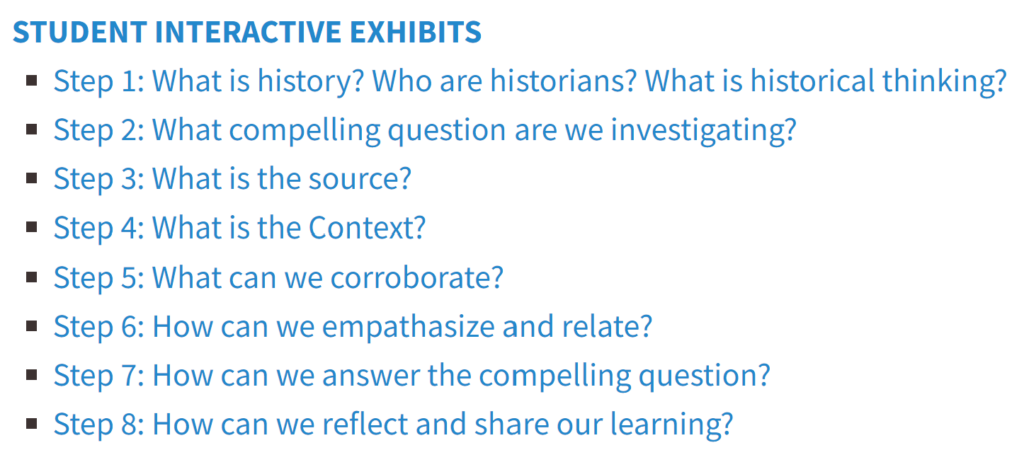Reflection:
It was helpful to see what previous students accomplished with their digital projects. I had issues determining my learning activity’s layout and the types of activities I could incorporate. I saw that previous students implemented google forms as a means to engage audiences with their site’s content. I played around with embedding google slides on my OMEKA site but struggled with the Google Drive Omeka plug-in. I installed it but the embedded Google Slides link does not fit in with the overall structure of the site. I then decided to install the PDF embed plug-in to upload PDFs to my site and make them accessible to site visitors for easy download. I also played around with a digital technique I learned during Covid-19 that allows me to embed links to sites that enable users to make an automatic copy of google slides, docs and sheets. Listening to other students’ digital projects also helped me see the usefulness in creating a teacher’s guide. Since I made my teacher’s guide I was able to see exactly what I want teachers and students to be able to accomplish with my project. Additionally, I saw that a popular technique amongst these digital projects was the usefulness in posing historical thinking questions to users as a means of inquiry based learning.
In terms of my project, I was able to make some developments with the layout to solidify my original ideas.
To make it clear that my site is multipurpose in its function to educate, I developed pages for a teacher’s guide and student interactive exhibits. The teacher’s guide will serve as an open letter to teachers to explain the site’s educational purpose and the designed historical thinking activity. In the teacher’s guide, I included a Schoology Access Request Form so educators can request the Schoology version of the historical thinking activity that teacher’s can easily implement on the Schoology class pages. I was able to embed my OMEKA site into a Schoology assignment for students to gain easy access to it. The Teacher’s guide also establishes the activity’s learning objectives and the disciplinary literacy standards. The teacher’s guide is not yet complete as I would like to include an instructional video that goes over the site’s functionality.

For my student interactive exhibits, I decided to separate the historical learning activity into interrelated steps. The steps correlate with a historical thinking skill. As of this moment, there are a total of 8 steps.

The steps serve as lessons on a specific topic/historical thinking skill. In step 1, I included teaching items from Stanford’s Digital Inquiry Group (DIG). DIG’s historical thinking tools have been useful in my own teaching so I decided to feature them on my site in order to define terms like corroboration, sourcing, close reading and contextualization. I am also embedding graphic organizers in my learning activity to serve as worksheets that can be completed as part of the lesson. Students and teachers can access these worksheets as a PDF or google doc. I installed plug-ins like PDF Embed to make documents available to site visitors. These worksheets are included in a collection titled “Educational Resources” for organizational purposes.

Next Steps:
I need to complete the written instructions for steps 4-8. I need to select and embed the worksheets I will be utilizing for steps 4-8. I need to create instructional videos that will guide users through the historical learning activity.